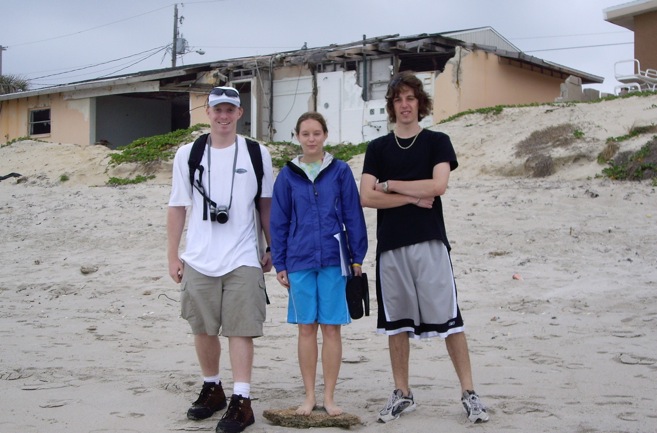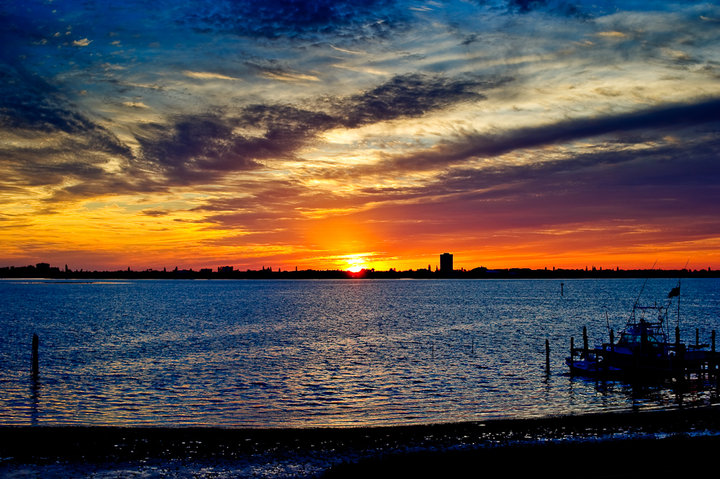 Coastal
areas of significance
Coastal
areas of significance
Physical, Biological, Population
| This "blue-green lagoon" is a coastal water body where marine or salt water is measurably diluted by fresh water. The fresh water comes from rivers, surface run-off, and ground water seepage. | |
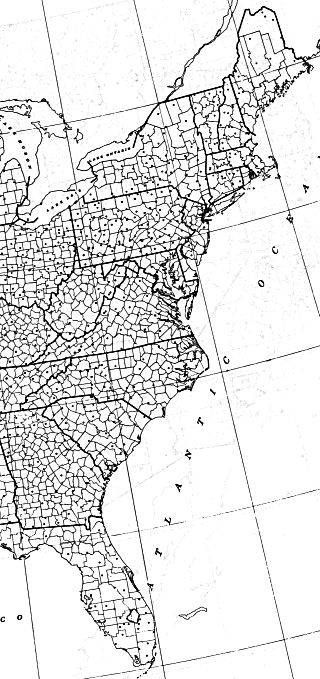 |
Freshwater from the land usually dilutes sea water to less than thirty-three parts per thousand concentration of salt. But as the shallow water absorbs radiant energy, the sun's heat increases evaporation so that a lagoon, may have greater salinity levels than that of the adjacent Atlantic ocean. Stretching for hundreds of miles, this shallow bay is among the most ecologically diverse waters in the nation. The Indian River Lagoon is actually an estuary. It occupies 40% of Florida's Atlantic coast harboring 20% of the state's mangrove forests. |
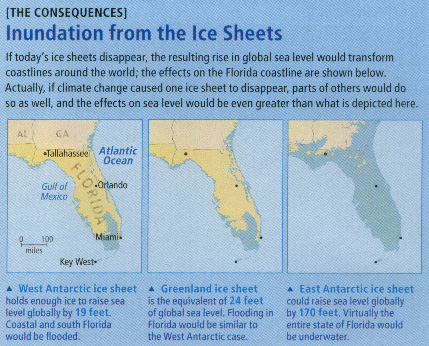 |
|
| Land forms in the region have deposits dated to 420,000 years ago. Over 100,000 years ago when sea-level was higher there was no lagoon before the Wisconsin ( or Würm ) glaciation. | |
The lagoon's Pleistocene condition was altered primarily in this century to improve navigation along the Intracoastal Waterway, ports and shipping channels. |
|
What do the experts say?
Physical conditions
156 miles long, the Indian River extends through six Florida counties beside the Atlantic Ocean.
This estuary straddles a bio-regional dividing line of vegetation types between northern temperate marshes and southern sub-tropical mangrove communities of plants (18 and 4 on the map below).
2,280 square miles comprise the watershed (land draining into the lagoon)or basin.
145 square miles of coastal habitats including: mangrove, sea grass beds, marshes and maritime wetlands.
1,461,760 acres characterized by various ecosystems make up area the basin.
Average depth in the lagoon is 3 feet, although navigation channels are maintained at 10 to 12 feet deep.
Expert's opinions on physical conditions:
Sand along the shore always moves bringing dramatic consequences.
"the Indian River system includes a drainage area of 3,280 square kilometers with a total estuarine zone of 740 square kilometers. This flow is entirely behind a barrier island system and averages 40 cubic meters per second."
Livingston, "Inshore Marine Habitats," in Myers & Ewel, eds., Ecosystems of Florida, p. 553.
"The physical habitat of the sea grass bed provides a refuge from predation for different species. As a result, the sea grasses are an important factor in predator-prey interactions, giving differential advantages to species that are able to take advantage of the refuge factor. . . .Sea grass beds are thus essential for the propagation and growth of many commercially important species."
[ Ibid., p. 562. ]
more experts?
There are four principle sources of productive vegetation that form the basis of biological wealth in the Indian River Lagoon.
- First is the single celled algae and bacteria that float in the water known as phytoplankton. Diatoms and dinoflagellates besides blue-green bacterium are simplest producers in this estuarine ecosystem.
- shoreline vegetation, In addition to floating phytoplankton, is the second contributor to the food base. Made up of salt grasses in the marshes or four species of trees in the mangroves enormous amount of proteins and carbohydrates are generated by the growth and decay of these plants. Mangrove forests astride the tidal shores of this estuary represent 20% of mangrove acreage in the nation.
- Seven species of sea grasses flourish underwater in the lagoon as the third source of production.
- Thalassia testudinum; turtle grass
- Syringodium filiforme;
- Halophila engelmannii;
- Halophila decipiens;
- Halophila johnsonii; Johnson's sea grass (restricted range from Sebastian south)
- Halodule wrightii; shoal grass
- Ruppia maritima; widgeon grass
- Finally the mud algae provides another source of food for grazing animals like snails and crabs.
These plant communities within the lagoon sustain 4,300 different species that live in or along the lagoon. Half of the state's manatee population live in or migrate through these waters. Half of the state's 738 fish species feed within this estuary during some period of their lives. Five species of marine turtles nest on beaches adjacent to or feed in waters exchanged with the Indian River Lagoon.
Sea Grasses are generic name for submerged flowering plants. Like land plants, sea grasses produce oxygen from photosynthesis ( sunlight + water + carbon dioxide => oxygen + sugar & carbohydrates {foods} ) and are called producers in the ecosystem. The depth at which sea grasses are found is limited by water clarity [measured by turbidity] because they need light to grow. These grasses are important to ecosystems as they help maintain water clarity by trapping sediments, stabilizing the bottom with their root system, and providing a nursery habitat for fish, shellfish, turtles, and crustaceans.
( "Glossary," The Indian River Lagoon: Our Heritage at Risk, p.286. )
Expert's opinions on biological conditions:
"The loss of sea-grass beds has impacted numerous species: amphipods, ectoprocts, isopods, mollusks, sipunculans, and fish." p. 324.
"Decreased water quality is the result of many factors: increased siltation caused by boating traffic and dredging; increased pollutant levels from sewage dumping and storm-water runoff, increased drainage of freshwater from degraded upland/wetland systems, and an overall increase in eutrophication." p. 326.
"The Indian River Lagoon is recognized as one of the most diverse estuaries in North America,... The Indian River Lagoon is a biologically diverse ecosystem...." p. 321-22.
( Dr. Hilary Swain, The Indian River Lagoon: Our Heritage at Risk, p. 321-334. )
"The most extensive human impact on Florida's salt marshes, however, has been associated with mosquito control practices, which continue to be in great demand in Florida. Some of the highest densities of mosquitoes ever recorded in the continental United States occurred in Florida before mosquito control.
"Increasing tourism and construction of rocket-launching facilities created a surge in demand for mosquito control in the 1960s along the Indian River ....Extensive impoundment began in 1954 and peaked in 1961, but it declined by 1972 as tidal marshes began to be considered more valuable for a variety of marsh functions. A total of 14,090 hectares of marshes had been impounded with 74% of the impounded area in Brevard County alone. All but 5 percent of Brevard County's salt marshes had been impounded by 1972."
"Continued environmental concerns -- especially relating to the demise of the dusky seaside sparrow and fear of negative effects on estuarine fish and shellfish production -- have recently led to the reopening or complete restoration of some formerly impounded marshes."
( Montague & Wieget, "Salt Marshes," Ecosystem of Florida , Myers & Ewel, eds. [1990] pp. 513-514. )
OTHER SOURCES:
( Calvin, Carlson, De Freese, 1991. "Threats to biological diversity in marine and estuarine ecosystems of Florida." Coastal Management, 19: pp. 73-101, p. 101. )
more experts?
Coastal Areas of the United States
Shorelines, by definition, are not stable places. Currents, tidal changes and sea level rise have all contributed to erosion and sedimentation. Below is a photograph of the consequences of building on a barrier island that is eroding. In the nation those areas subject to hurricanes are densely populated shorelines subject to these relative changes.
Home built behind the dune was still lost to coastal erosion in Brevard County, Florida.
Social ConditionsVirtually uninhabited in the 1940s the barrier islands that defend the lagoon against the sea and trap its runoff behind acres of sand dunes, are now crowded with high rises and single family homes.
Today areas adjacent to the lagoon suffer from low density, automobile dependent, inefficient development. This causes the water itself to be flooded with storm water runoff, septic ooze and sanitary sewer effluent. The lagoon's shores are lined by power plants discharging warm water. Its basin is virtually dammed in six places by causeways that stifle the circulation of tidal currents in and out of St. Lucie and Sebastian inlets where the lagoon meets the sea.
1970: 303,858 people in the five counties adjoining the Indian River Lagoon
1990: 678,763 people
1970-1990 the area grew by 124%
2010: the projected growth rate is 60% to 1,082,853 people.
St. Johns River Water Management District, The Indian River Lagoon: Our Heritage at Risk, (1996) p. 20.
Experts opinions on social conditions:
"In terms of land acquisition, lands must be purchased now before they are developed. There are several land acquisition management projects set up throughout the Indian River Lagoon.... to aid in the selection of lands for acquisition to create buffers along the Lagoon."
p. 329.
more experts?
( Dr. Hilary Swain, The Indian River Lagoon: Our Heritage at Risk, p. 321-334. )
Private coastal property and compensation to owners.
"On the other side of the balance, affirmatively supporting a compensation requirement, is the fact that regulations that leave the owner of land without economically beneficial or productive options for its use-- typically, as here [the case of Lucas v. South Carolina Coastal Council No. 91-453], by requiring land to be left substantially in its natural state -- carry with them a heightened risk that private property is being pressed into some form of public service under the guise of mitigating serious public harm...."
"We think, in short, that there are good reasons for our frequently expressed belief that when the owner of real property has been called upon to sacrifice all economically beneficial uses in the name of the common good, that is to leave his property economically idle, he has suffered a taking."
Justice Antonin Scalia of the U.S. Supreme Court
Situation
Six local drainage district's improvements, 19 causeways and four out of six inlets have been constructed in the lagoon altering water flow by constricting or redirecting the circulation of the water.
"More than 75% of the lagoon's salt water wetlands were impounded so the areas could remain flooded to prevent mosquitoes from laying their eggs. Impoundment of salt marsh areas has removed 60.9 square miles of marsh from connection with the open waters of the Lagoon." *
* St. Johns River Water Management District, The Indian River Lagoon: Our Heritage at Risk, (1996) p. 13.
What do the experts say? Florida natural areas | Florida tree diversity | Controlling Sprawl

.gif) Navigating
this site:
Navigating
this site: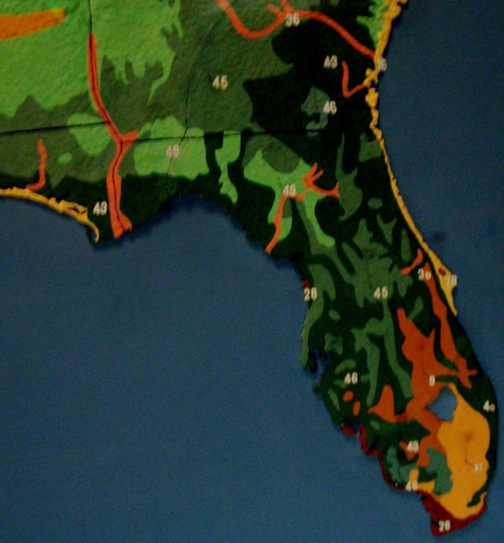
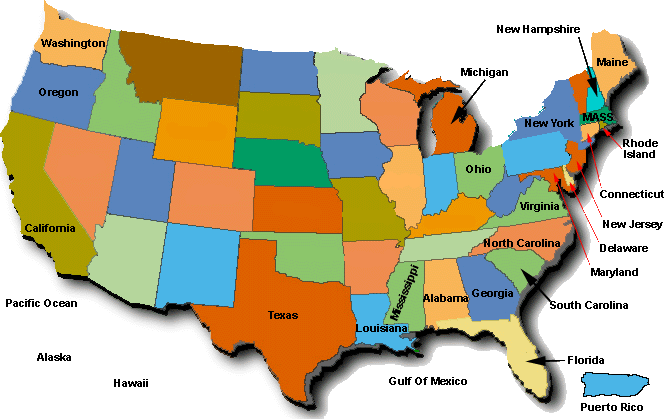
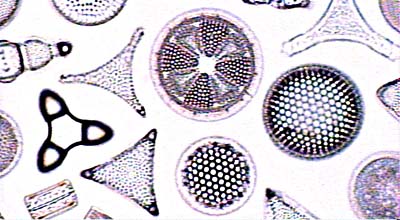 Biological
wealth
Biological
wealth
